Abstract
A method has been devised for the detection and measurement of nitrite reductase activity in intact barley (Hordeum vulgare L. cv. Himalaya) aleurone layers. The technique involves feeding aleurone layers nitrite and measuring nitrite disappearance after a given time period. The method also allows simultaneous determination of nitrite uptake by the tissue. Quantitative recovery of nitrite is obtained by rapid heating of tissue in the presence of dimethyl sulfoxide.
Using the procedure described, nitrite reductase activity in intact barley aleurone layers was determined. Enzyme activity was increased by prior incubation of the tissue with nitrate, but considerable activity was present in tissue incubated without nitrate. Nitrate-induced activity was inhibited by cycloheximide but not by actinomycin D. Enzyme activity in induced layers was inhibited by 2,4-dinitrophenol, and partially by antimycin A and 2-n-heptyl-4-hydroxyquinoline N-oxide. Activity in noninduced tissue appeared to be less sensitive to these respiratory inhibitors. In contrast, both activities were inhibited more than 90% by anaerobiosis; but nitrate-induced and noninduced aleurone layers were able to reduce nitrite anaerobically when the concentration of substrate in the assay medium was reduced from 250 μm to 25 μm. Nitrite uptake was relatively insensitive to anaerobiosis and to the inhibitors tested.
Nitrite depletion from the medium by aleurone layers was rapid at pH 4.5 and negligible at pH 7.5. Nitrite accumulated at pH 4.5 under anaerobic conditions was rapidly released when the tissue was transferred to medium at pH 7.5. Nitrite release at pH 7.5 occurred whether the tissue was maintained under anaerobic or aerobic conditions.
Full text
PDF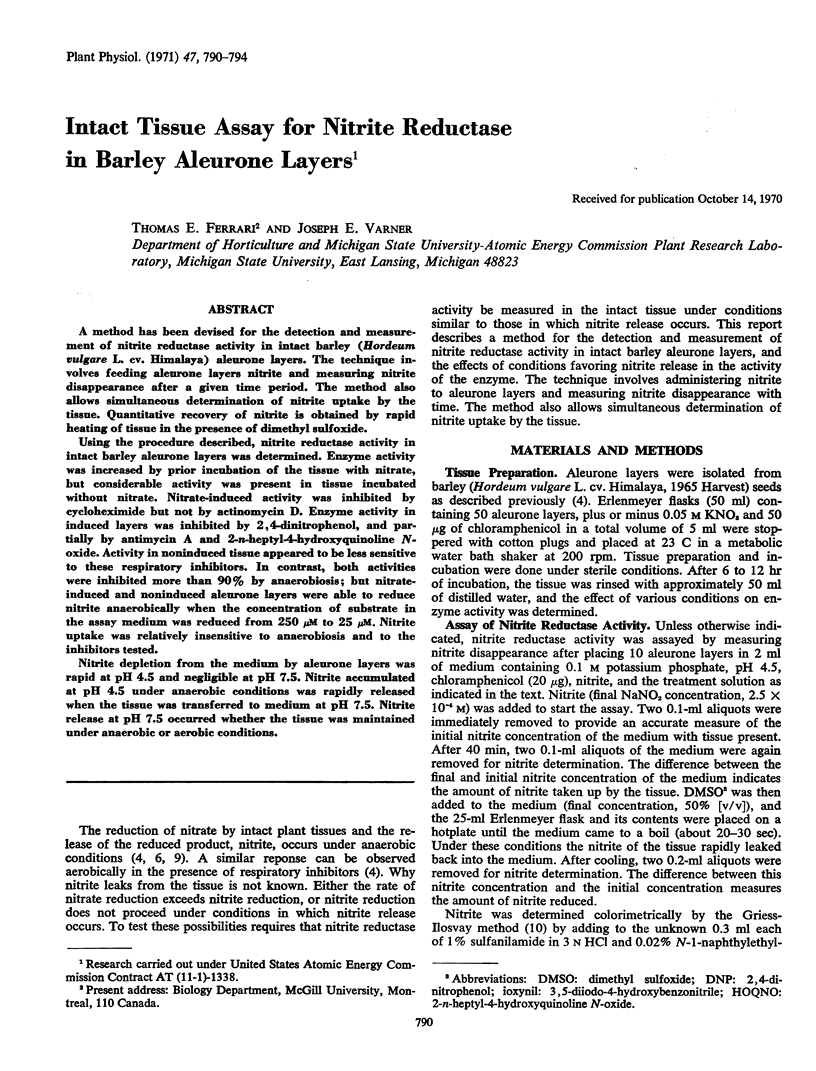
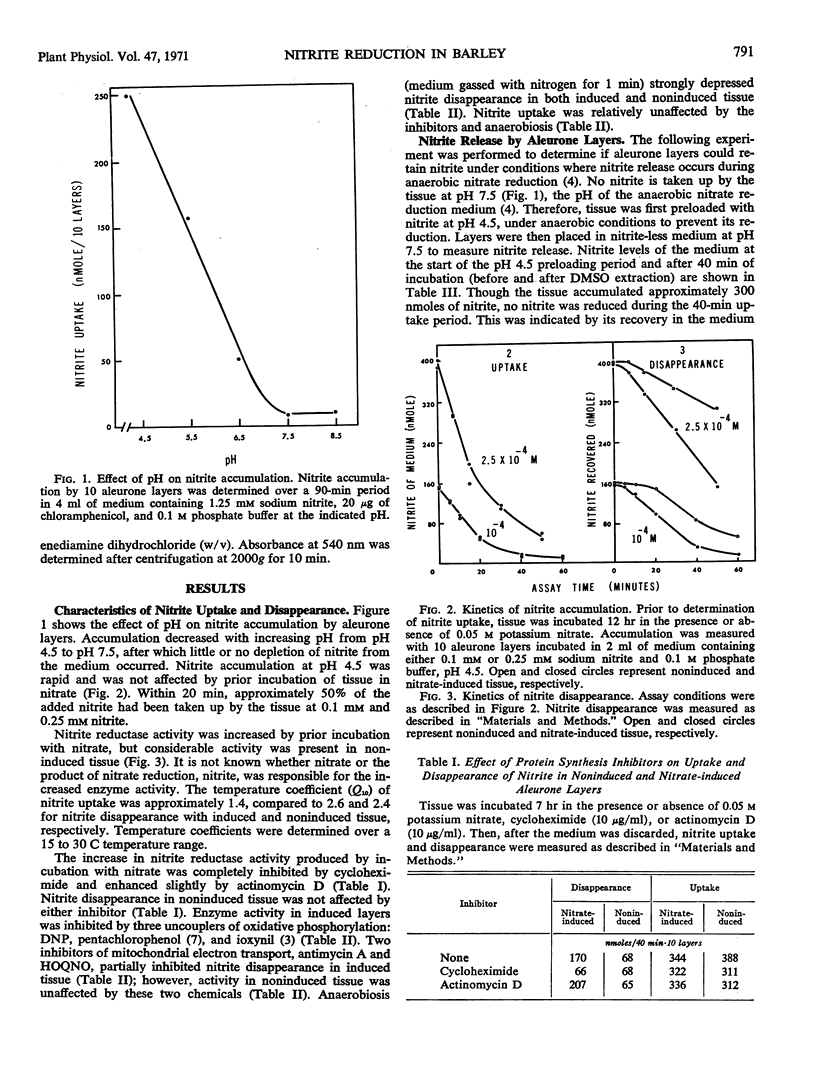
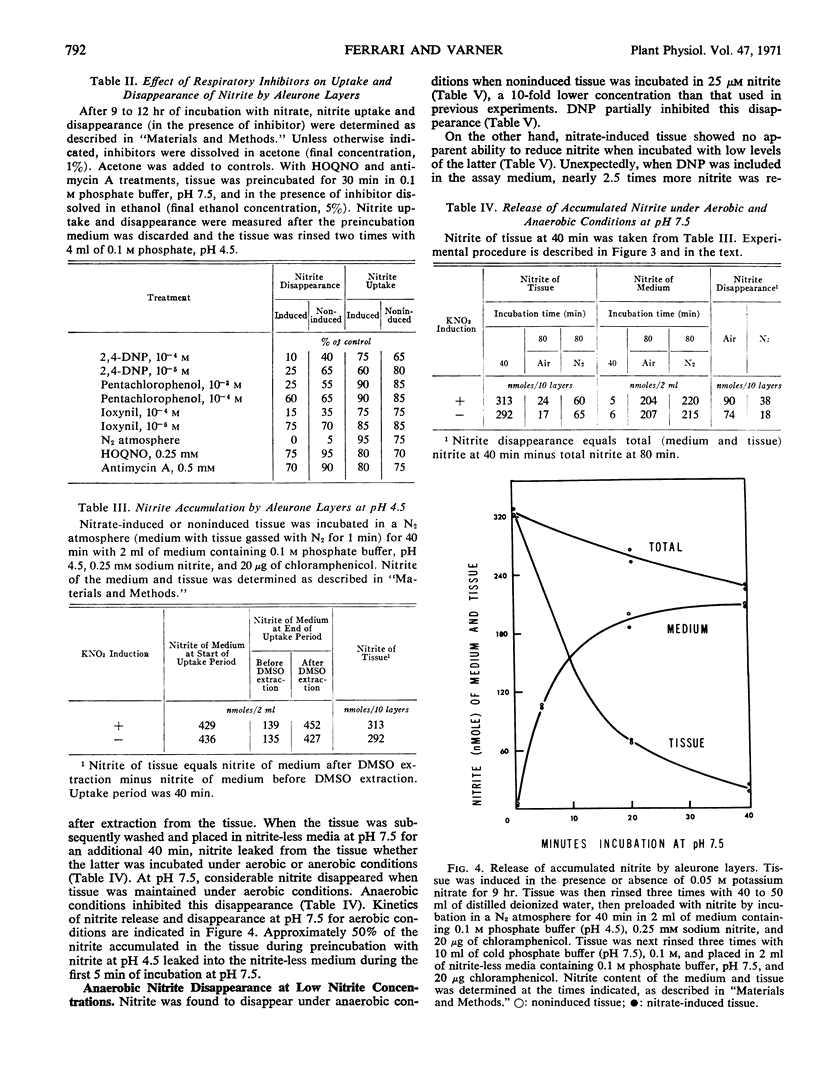
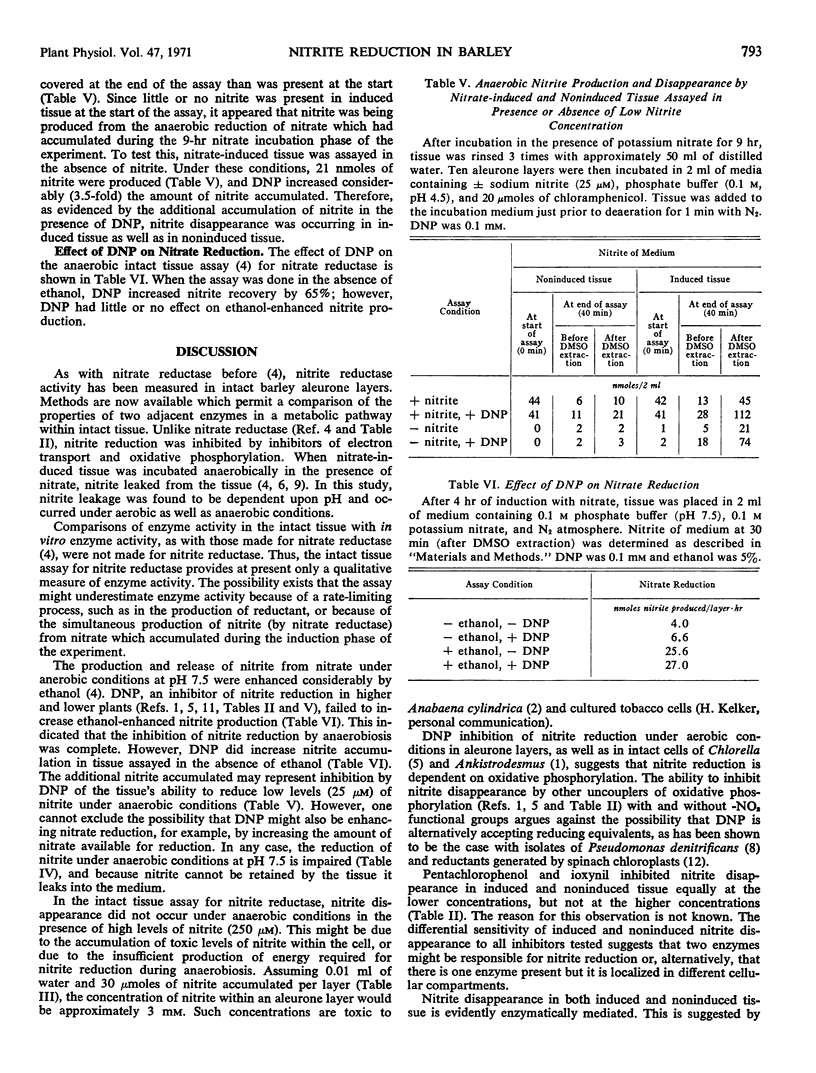
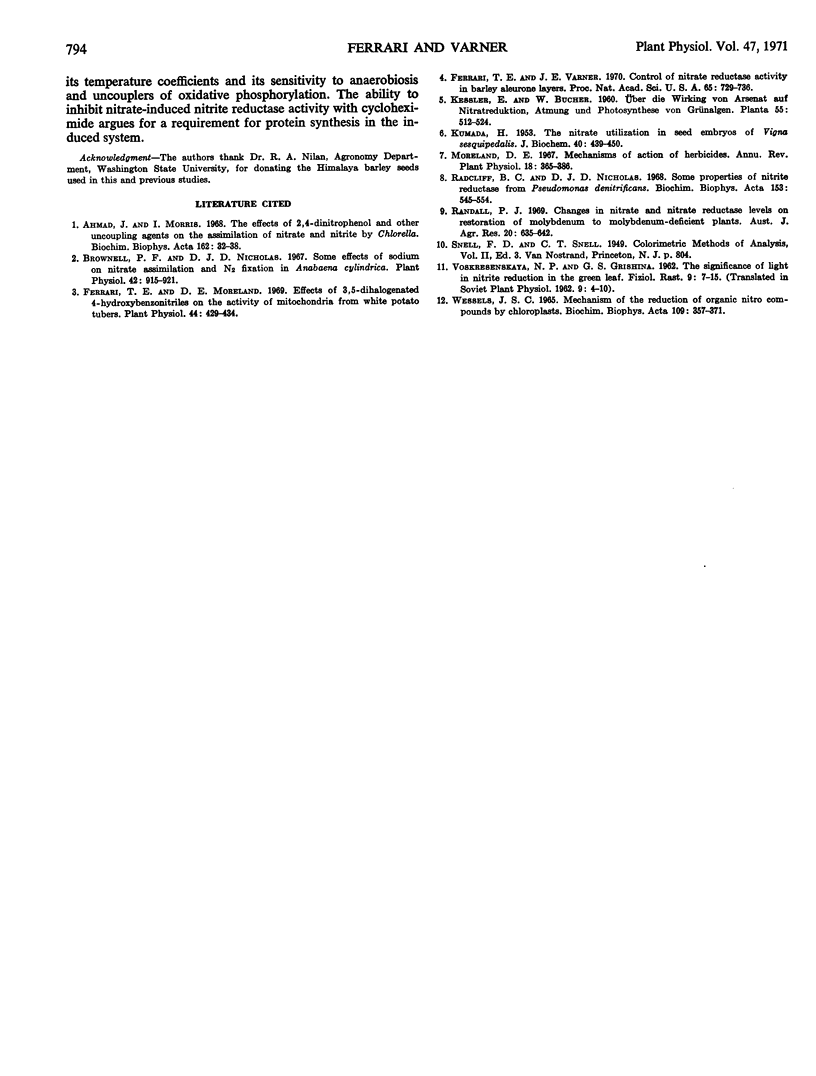
Selected References
These references are in PubMed. This may not be the complete list of references from this article.
- Ahmed J., Morris I. The effects of 2,4-dinitrophenol and other uncoupling agents on the assimilation of nitrate and nitrite by chlorella. Biochim Biophys Acta. 1968 Jul 16;162(1):32–38. doi: 10.1016/0005-2728(68)90211-9. [DOI] [PubMed] [Google Scholar]
- Brownell P. F., Nicholas D. J. Some Effects of Sodium on Nitrate Assimilation and N(2) Fixation in Anabaena cylindrica. Plant Physiol. 1967 Jul;42(7):915–921. doi: 10.1104/pp.42.7.915. [DOI] [PMC free article] [PubMed] [Google Scholar]
- Ferrari T. E., Moreland D. E. Effects of 3,5-Dihalogenated-4-hydroxybenzonitriles on the Activity of Mitochondria From White Potato Tubers. Plant Physiol. 1969 Mar;44(3):429–434. doi: 10.1104/pp.44.3.429. [DOI] [PMC free article] [PubMed] [Google Scholar]
- Ferrari T. E., Varner J. E. Control of nitrate reductase activity in barley aleurone layers. Proc Natl Acad Sci U S A. 1970 Mar;65(3):729–736. doi: 10.1073/pnas.65.3.729. [DOI] [PMC free article] [PubMed] [Google Scholar]
- Radcliffe B. C., Nicholas D. J. Some properties of a nitrite reductase from Pseudomonas denitrificans. Biochim Biophys Acta. 1968 Apr 2;153(3):545–554. doi: 10.1016/0005-2728(68)90184-9. [DOI] [PubMed] [Google Scholar]
- Wessels J. S. Mechanism of the reduction of organic nitro compounds by chloroplasts. Biochim Biophys Acta. 1965 Nov 29;109(2):357–371. doi: 10.1016/0926-6585(65)90163-9. [DOI] [PubMed] [Google Scholar]


